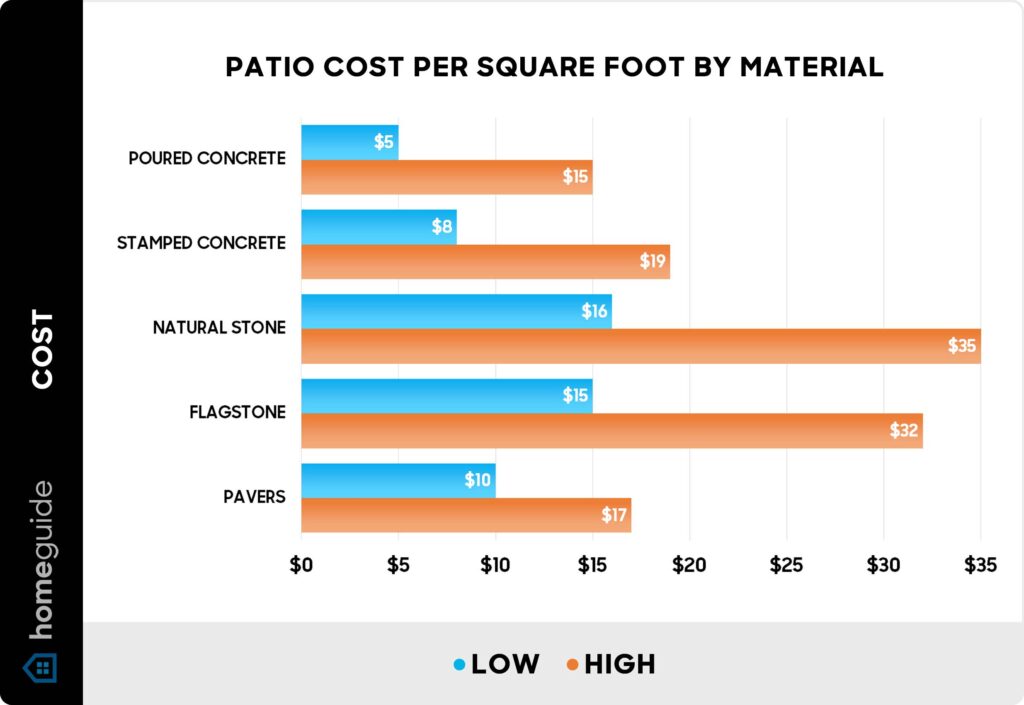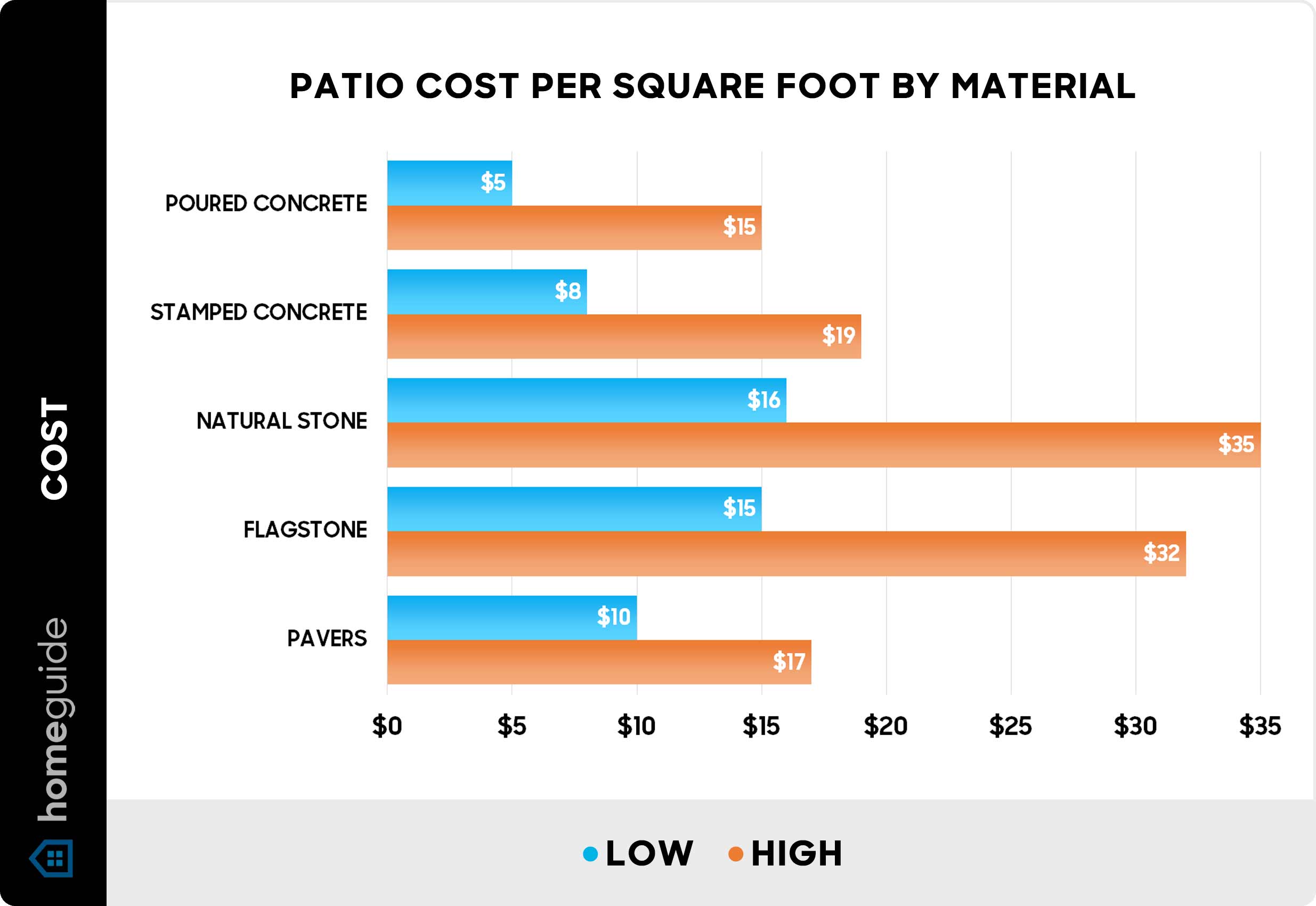
Decoding Patio Installation Cost: A Comprehensive Guide for Homeowners
Planning a new patio? One of the first questions on any homeowner’s mind is: What’s the patio installation cost? The answer, unfortunately, isn’t straightforward. Many factors influence the final price, from the materials you choose to the complexity of the design and even your geographic location. This comprehensive guide will break down all the elements impacting patio installation cost, helping you budget effectively and make informed decisions for your outdoor space.
Understanding the Key Cost Factors
Several elements contribute to the overall patio installation cost. Understanding these factors is crucial for accurate budgeting and avoiding unwelcome surprises.
Material Selection
The material you choose for your patio is arguably the biggest driver of cost. Options range from affordable gravel and concrete to more luxurious natural stone and pavers. Here’s a general overview:
- Gravel: The most budget-friendly option, gravel patios are relatively easy to install and offer good drainage. However, they require more maintenance to keep them looking tidy and can be less comfortable underfoot.
- Concrete: A popular choice due to its durability and versatility. Concrete can be poured in place, stamped, or stained to create various looks. The cost of a concrete patio varies depending on the finish and any decorative elements.
- Pavers: Available in a wide range of materials (concrete, brick, stone), shapes, and colors, pavers offer excellent design flexibility. They are more expensive than poured concrete but offer superior aesthetics and can be easier to repair.
- Natural Stone: Options like flagstone, slate, and travertine provide a natural, high-end look. Natural stone is typically the most expensive patio material but offers unmatched beauty and longevity.
Patio Size and Shape
Logically, a larger patio will require more materials and labor, increasing the patio installation cost. Complex shapes and designs also add to the expense, as they require more precise cutting and fitting of materials. Simple rectangular or square patios are generally the most cost-effective.
Site Preparation
Before any materials can be laid, the site needs to be properly prepared. This may involve clearing existing vegetation, leveling the ground, and ensuring proper drainage. If your yard has significant slopes or existing structures that need to be removed, site preparation costs will be higher. Poor site preparation can lead to problems later on, so it’s important to invest in this step.
Labor Costs
Labor costs vary depending on your location, the complexity of the project, and the experience of the contractor. It’s crucial to get multiple quotes from reputable contractors to compare pricing and ensure you’re getting a fair deal. Remember that the cheapest quote isn’t always the best; consider the contractor’s reputation, experience, and warranty.
Permits and Inspections
Depending on your local regulations, you may need to obtain permits before starting your patio project. Permit fees vary but are typically a small percentage of the overall patio installation cost. Inspections may also be required to ensure the patio meets local building codes.
Additional Features
Adding features like built-in seating, fire pits, outdoor kitchens, or pergolas will significantly increase the patio installation cost. These features require additional materials, labor, and potentially specialized contractors. Consider these add-ons carefully and prioritize those that will provide the most enjoyment and value.
Average Patio Installation Cost: A Regional Perspective
The average patio installation cost varies significantly depending on your geographic location. Labor rates, material prices, and local regulations all contribute to these regional differences. Here’s a general overview:
- Northeast: Expect to pay higher than average due to higher labor costs and demand.
- Southeast: Generally lower than average due to more favorable weather conditions and potentially lower labor costs.
- Midwest: Costs are typically around the national average.
- West: Similar to the Northeast, expect to pay higher than average, especially in coastal areas.
It’s essential to research average patio installation cost in your specific area to get a more accurate estimate.
Cost Breakdown by Material Type
Let’s delve deeper into the costs associated with different patio materials.
Gravel Patio Cost
Gravel is the most affordable option, typically ranging from $2 to $5 per square foot for materials and installation. The total cost will depend on the type of gravel you choose (pea gravel, crushed stone, etc.) and the depth of the gravel layer. While budget-friendly, gravel patios require ongoing maintenance to prevent weeds and keep the surface level.
Concrete Patio Cost
A basic poured concrete patio typically costs between $6 and $12 per square foot. Stamped or stained concrete can increase the price to $12 to $18 per square foot. The cost will also depend on the thickness of the concrete slab and any reinforcement required. Concrete patios are durable and low-maintenance but can be prone to cracking over time.
Paver Patio Cost
Paver patios range from $10 to $20 per square foot, depending on the material (concrete, brick, or stone) and the complexity of the design. Pavers offer excellent design flexibility and can be easily repaired if damaged. However, they require more labor to install than poured concrete and may require periodic sealing to protect them from the elements.
Natural Stone Patio Cost
Natural stone patios are the most expensive option, typically ranging from $15 to $30 per square foot. The cost will depend on the type of stone (flagstone, slate, travertine), the size and shape of the stones, and the complexity of the installation. Natural stone patios offer unmatched beauty and longevity but require skilled installers to ensure proper drainage and stability.
DIY vs. Professional Installation
While it’s tempting to save money by installing your patio yourself, it’s important to carefully consider your skills, time commitment, and the complexity of the project. DIY patio installation can be a rewarding experience, but it’s not for everyone.
DIY Patio Installation
If you’re comfortable with basic landscaping tasks, such as digging, leveling, and laying materials, you may be able to install a simple gravel or paver patio yourself. However, for larger or more complex projects, it’s generally best to hire a professional. DIY patio installation can save you money on labor costs, but you’ll need to factor in the cost of tools, equipment rental, and materials. It’s also important to be aware of potential pitfalls, such as improper drainage, uneven surfaces, and structural instability. [See also: Patio Design Ideas for Small Backyards]
Professional Patio Installation
Hiring a professional patio installer ensures the job is done correctly and efficiently. A good contractor will have the experience, equipment, and expertise to handle all aspects of the project, from site preparation to final finishing. While professional installation is more expensive, it can save you time, hassle, and potential headaches down the road. When choosing a contractor, be sure to get multiple quotes, check references, and review their portfolio. A detailed contract outlining the scope of work, materials, and payment schedule is also essential.
Tips for Saving on Patio Installation Cost
While patio installation can be a significant investment, there are several ways to save money without sacrificing quality or aesthetics.
- Choose budget-friendly materials: Gravel and concrete are generally the most affordable options.
- Keep the design simple: Complex shapes and patterns increase labor costs.
- Minimize site preparation: Avoid projects that require extensive excavation or grading.
- Get multiple quotes: Compare pricing from different contractors to find the best deal.
- Consider DIY for small projects: If you’re comfortable with basic landscaping tasks, you may be able to install a small patio yourself.
- Time your project wisely: Contractors may offer discounts during the off-season.
- Negotiate with suppliers: Ask for discounts on materials, especially if you’re buying in bulk.
Maintaining Your Patio to Prolong Its Life
Proper maintenance is essential for prolonging the life of your patio and preventing costly repairs. The specific maintenance requirements will depend on the material you choose. Here are some general tips:
- Sweep regularly: Remove dirt, leaves, and debris to prevent staining and discoloration.
- Clean spills immediately: Wipe up spills as soon as possible to prevent staining.
- Power wash periodically: Power washing can remove stubborn stains and algae.
- Seal pavers and natural stone: Sealing helps protect these materials from the elements and prevents staining.
- Repair cracks and damage promptly: Address any cracks or damage as soon as possible to prevent them from worsening.
Conclusion: Investing in Your Outdoor Space
A well-designed and properly installed patio can significantly enhance your outdoor living space and increase your home’s value. While patio installation cost can be a concern, understanding the factors that influence pricing and taking steps to save money can help you create the patio of your dreams without breaking the bank. By carefully considering your needs, budget, and design preferences, you can make informed decisions and invest in a patio that will provide years of enjoyment.
Remember to research local regulations, obtain necessary permits, and choose reputable contractors to ensure a successful patio installation project. With careful planning and execution, you can transform your backyard into a beautiful and functional outdoor oasis. The initial patio installation cost will be well worth the long-term enjoyment and increased property value.

